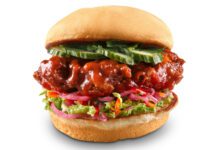Foodservice and franchise consultant, Douglas P. Fisher offers advice on restaurant valuations.
After writing several articles about restaurant valuation, I continue to advise clients to investigate valuators’ credentials, understanding no rules of thumb exist — except one that limits the multiplier (inversion of the capitalization rate), used to avoid exceeding a reasonable payback period based on the length of a restaurant lease. Typically, an independent restaurant is valued on the capitalization of its operating income stream, which is defined as ‘Earnings Before Interest, Taxes, Depreciation and Amortization (“EBITDA”).
I came across two unusual situations this past summer that offer good insight into the common mistakes made when assessing and determining a multiplier and finalizing a restaurant’s EBITDA. In the first, I was an expert witness in a dispute where the franchisees, in buying and selling properties to one another, did so on the basis of gross sales and not a capitalization of the EBITDA. The franchisees were going after the franchisor for the loss in their business based on a claim the business was worth one year’s gross sales, notwithstanding that, due to the franchisee’s mismanagement, they had not shown a profit for several years.
In the other situation, a partner and manager of a major accounting/hospitality consulting house in Vancouver called me to canvass and determine the appropriate multiplier to use for a mid-sized restaurant chain. The response was simple: if they did not have the expertise to do the work, they should tell the client and provide the names of other qualified experts. Valuating a restaurant based on its gross sales is incorrect, as is determining a multiplier based on canvassing several consultants.
Depending on the type and size of operation, the valuation approaches can be radically different. While a multiplier approach is usually used for an independent restaurant, significantly more in-depth analysis must be conducted for corporate chains or franchise companies, which are both analyzed differently.
The only real ‘rule of thumb’ to live by when valuating independent restaurants is the multiplier should never exceed one-third of the remaining term of the lease. If the remaining lease is 10 years, then the maximum the multiplier should be is 3.3. If the lease has 15 years remaining, then there may be an opportunity to get the multiplier as high as five times EBITDA, but it is rarely the case at an independent restaurant.
While this ‘limiter,’ provides a ceiling on the value, it serves little other purpose. A long lease does not automatically provide a basis for the capitalization rate, nor the multiplier. Other factors should be considered when developing a valuation multiplier. These would include, but not be limited to, the following:
The capitalization rate of the equity and debt ratios are an important part of the equation and are often considered in a detailed analysis. Restaurants with a higher ‘debt carry load’ usually have a higher capitalization rate and lower multiplier.
A new restaurant — an unproven concept or restaurant, even if it is part of a chain — does not usually have the same multiplier as one that’s been in business for three to four years. The latter may show some success and has a history or trend line that can assist in supporting a valuation multiplier whether it is high or low. On the other hand, a restaurant that’s been in business for eight to 10 years may be near the end of its life cycle and have a lower multiplier.
A restaurant with growing year-over-year sales shows strength and would have a higher multiplier than one whose sales have levelled off and are growing solely with inflation. The restaurant growing with an inflation multiplier may have
a higher multiplier than the restaurant experiencing no growth or decline in sales.
A restaurant with a large EBITDA (in terms of percentage of sales) may have a higher multiplier than one making a smaller EBITDA. If the EBITDA is rising over time, then one may be able to provide a higher multiplier than a restaurant that is consistent (although this would be considered excellent as well) or whose EBITDA is dropping.
In almost all cases, the EBITDA that is shown needs to be examined carefully to ensure it’s correct. In some businesses an owner may not take a salary and show more EBITDA than one that has an appropriate owner’s draw included in the operating costs. In others, the restaurateur may run a car through the business that is not necessary for the operation of the business or alternatively use their car for delivery without taking compensation. There are a hundred other aspects of testing the strength of the EBITDA to make sure it is accurate.
All the above factors should be considered when finalizing the EBITDA, and only an experienced restaurant and foodservice valuator can provide the sensitivity and assessment that each critical point has on the valuation.
Only once in my career did I find an independent restaurant value that was based on a multiplier more than five-times the EBITDA; I have seen most between 1.5 and four times EBITDA. In almost every case, adjustments to the EBITDA are required to find the correct amount to be valued.
Meanwhile, non-profitable businesses that have not generated a positive EBITDA in a year or two are subject to a different valuation approach. And, assessment of a business that has made a minimal or negative operating profit is limited to the net book value of the business, less its outstanding debt at the most, with some consideration given to the length of the lease and quality of the equipment, furnishing and fixtures at the time of the valuation.
Doug Fisher is Canada’s leading foodservice and franchise consulting practitioner, with a practice focused on franchise development, operations assessment and litigation support. His firm has been in business since 1984. He is author of four industry-related books, including Canadian Restaurant Accounting, and is currently conducting operations and franchise assignments on three continents. conducting operations and franchise assignments on three continents. Doug can be reached at (416) 489-6996, [email protected] or via fhgi.com.
More in Feature Articles
Foodservice Trend Report 2012 (Food, Operations, Technology, Social Media, Greening)
Thoughts on Restaurant Valuations
Analyze This: Corn and Potato Pancakes With Tomato Relish (Recipe by Jamie Kennedy)
The Tracker: Smart Inventory Technology
Smooth Sailing: Profiling Chef Jeremy Charles
Books for Cooks: A Whole New World





















